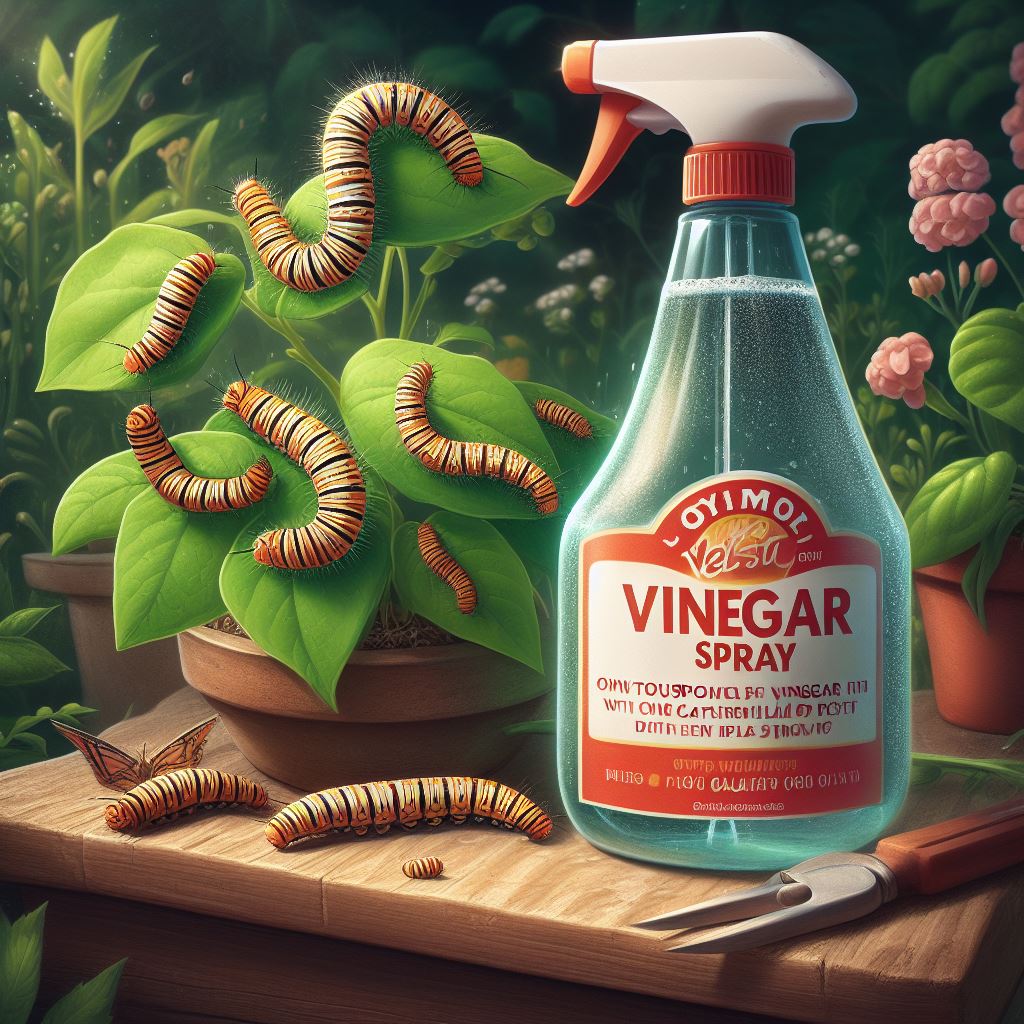Home Remedies for Killing Caterpillars on Plants
Keep caterpillars away with natural remedies: vinegar or soap spray, baking soda fungicide, neem oil, Dipel, and homemade repellent. Direct removal methods also work. Enjoy a pest-free garden!
Caterpillars may seem harmless, but their voracious appetite can wreak havoc on your beloved plants. If you've noticed irregular sections missing from your plant's leaves or the presence of slow-moving, oblong bugs, chances are you're dealing with caterpillar infestation. Before reaching for harsh chemicals, consider these effective and eco-friendly home remedies to tackle the problem head-on.
1. Vinegar Spray:
A simple mixture of vinegar and water can effectively kill and repel most garden pests, including caterpillars. Mix two tablespoons of vinegar with one gallon of water and spray it wherever caterpillars have been spotted.

2. Soap Spray:
Create a soap spray by mixing two tablespoons of soap flakes with one liter of water. Stir until the flakes dissolve completely. No further dilution is necessary; simply spray the solution on affected areas. This solution not only kills caterpillars but also works against other pests like aphids, whiteflies, and thrips.

3. Baking Soda Fungicide:
Combat fungal problems and deter caterpillars with a homemade fungicide. Mix one liter of water with one teaspoon of baking soda, one teaspoon of natural Castile soap, and two teaspoons of vegetable oil. Spray this solution on your plant's leaves twice a month as a preventative measure or every three days to treat existing fungal issues.

4. Neem Oil:
Harness the power of neem oil, a botanical extract derived from the neem tree, to suffocate and repel caterpillars and mites. Spray neem oil on affected plants to keep these pests at bay.

5. Dipel:
Opt for an organic solution like Dipel, which utilizes bacteria to infect and kill caterpillars without harming other beneficial insects or the environment. Simply spray Dipel on the leaves of infested plants or on susceptible plants as a preventive measure.

6. Natural Repellent Spray:
For a potent homemade caterpillar deterrent, combine crushed chili, garlic cloves, dishwashing liquid, vegetable oil, and turmeric with water. Let the mixture sit for a while before spraying it generously on both sides of the leaves.

Methods for Direct Removal:
1. Hand-Pick Your Least Favorites:
Put on gardening gloves and manually remove caterpillars from the leaves. Drop them into a bucket filled with hot water and mild dish soap to drown them. For a hands-on approach, consider hand-picking caterpillars during the nighttime around 9 pm when they're most active. Wear gloves to protect your hands and simply pluck them off the leaves. This method can be particularly effective for targeting specific areas where caterpillars are concentrated.
2. Empty the Nest:
Destroy caterpillar nests by puncturing them with a stick or broom handle and removing all inhabitants. Dispose of the nest and its contents in warm, soapy water.
3. Poison the Hungry Caterpillars' Food:
Consider using Bacillus thuringiensis (Bt), a natural bacteria-based solution that effectively targets caterpillars without harming other insects or the environment.
4. Homemade Caterpillar Deterrent:
Mix up a homemade deterrent using molasses or garlic solution. These solutions create an unpleasant environment for caterpillars and deter them from munching on your plants.
With these effective home remedies and methods for direct removal, you can protect your plants from caterpillar damage without resorting to harsh chemicals. Try these eco-friendly solutions and enjoy a thriving, pest-free garden!
